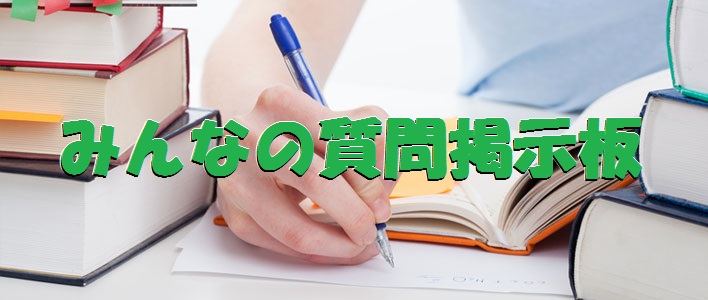Lesson 6 The Story of PlayPumps
– Ideas for the future –
Part 1
1 Next to a schoolhouse in a South African village, children laugh and scream as
they ride on a playground merry-go-round. As the children push it, that energy is
used to pump water from a well into a water tank. It provides the village people
with clean, healthy drinking water. Now the village women no longer have to walk
far and work hard to get water, and the children are very happy with their new toy.
2 At least that was a beautiful idea. Not only the World Bank but also then-First
Lady Laura Bush and the US government quickly became interested in the idea.
In 2006, the US government announced a partnership with the merry-go-round
water pump project called PlayPumps International.
Part 2
3 The project seemed very well-studied, self-sustaining, and useful for local
situations. It was a clever idea which solved three problems in one step. Women
no longer had to work hard every day to pump water. Girls didn’t have to miss
school to help their mothers get water. Children now had their first playground
toys.
4 The PlayPumps were meant to be self-sustaining. The water tank was covered
with four billboards, which could carry advertisements to help cover the cost of the
pumps’ maintenance. The plan was to also use these billboards to show public
health messages.
5 In addition, PlayPumps International planned to employ local people. The big
parts of the pump were made in South Africa, and the pumps were installed by local
teams, who had received special training.
6 With support from the World Bank and the US government, PlayPumps
International announced a plan to bring 4,000 PlayPumps to ten African countries.
The organization hoped to provide clean drinking water for up to ten million people
by 2010.
Part 3
7 However, after it was carried out, it wasn’t long until criticism started. In 2007
UNICEF wrote a report on the project. It said that there was a question of the cost.
One PlayPump costs about $14,000 to install, which is enough to cover the cost of
several ordinary hand pumps. Also, the billboard plan wasn’t working well.
UNICEF found that 75 percent of the tanks in Zambia carried no advertisements.
8 The next thing was a major problem in the design. In 2009 The Guardian wrote
that children would have to be playing for over 24 hours every day to get the
necessary amount of water. To make matters worse, children were no longer
interested in playing with the pump. It was a pity that the village women now had
to push the merry-go-round with their hands.
9 Moreover, many had trouble with the pumps’ maintenance. People in Zambia
had to call maintenance numbers in South Africa, and the parts would take months
to arrive.
Part 4
10 In the end, PlayPumps International closed down in March 2010 and gave
everything to another international development organization. The organization
now uses the PlayPumps as one of several possible answers to water problems.
11 The first PlayPumps project failed despite its new technology, great ideas, and
strong support. Development projects often fail, and the failures either face strong
criticism or are hidden away out of embarrassment or fear.
12 However, it is possible that the same kind of failures will happen again if past
failures are hidden or forgotten. The most important lesson here may be to know
that failure IS always possible. The key is to learn from failing. If we don’t fail,
there will be no changes or new ideas. As Thomas Edison put it, “I have not failed.
I’ve just found 10,000 ways that won’t work.”
Lesson 6 プレイ・ポンプの物語 ~未来のためのアイデア~
Part 1
1 南アフリカの村のとある校舎の隣で,運動場のメリーゴーラウンドに乗りながら,
子どもたちが笑ったり叫んだりしている。子どもたちがそれを押すと,井戸から貯水タ
ンクへと水を汲み上げるのにそのエネルギーが使われる。そのおかげで村人たちは,き
れいで健康的な飲み水が得られる。今や村の女性たちは,もはや水を手に入れるために
遠くまで歩いて懸命に働く必要もなく,子どもたちも新しい遊具にとても満足している。
2 少なくとも,それはすばらしいアイデアであった。世界銀行だけでなく,当時の大
統領夫人であったローラ・ブッシュとアメリカ政府も,すぐにそのアイデアに興味を持
った。2006 年にアメリカ政府は,プレイ・ポンプ・インターナショナルと呼ばれるメリ
ーゴーラウンド型給水ポンプ事業との提携を発表した。
Part 2
3 その事業はとてもよく研究され,自己持続型で,地域の状況に役立つものに思われ
た。それは,3つの問題を一度に解決する優れたアイデアだった。女性たちはもう,水
を汲むために毎日懸命に働かなくてもよくなった。少女たちは,母親の水汲みを手伝う
ために学校を休まなくてもよくなった。子どもたちは今や,初めての運動場の遊具を手
に入れた。
4 プレイ・ポンプは,持続可能なように作られていた。貯水タンクは4つの広告看板
で覆われ,そこにはポンプの整備費用をまかなうのに役立つように広告を掲載すること
ができた。その計画はまた,こうした掲示板を利用して公衆衛生メッセージを示すこと
でもあった。
5 加えて,プレイ・ポンプ・インターナショナルは,地元の人々を雇うことも計画し
た。ポンプの大きな部品は南アフリカで作られ,ポンプは地元のチームによって設置さ
れたが,彼らは特殊な訓練を受けていた。
6 世界銀行とアメリカ政府からの支援を受けて,プレイ・ポンプ・インターナショナ
ルは,アフリカの 10 か国に 4,000 台のプレイ・ポンプを提供する計画を発表した。そ
の団体はまた,2010 年までに,最大 1,000 万人分のきれいな飲み水を提供することを望
んでいた。
Part 3
7 しかしながら,その事業が実行されると,まもなくして批判が起こった。2007 年に,
ユニセフはこの事業についての報告書を書いた。それによれば,費用の問題があるとい
うことだった。1台のプレイ・ポンプを設置するのにおよそ 14,000 ドルかかるのだが,
それは通常の手押し式ポンプ数台分の費用をまかなえるほどの金額である。さらに,広
告看板の計画はあまりうまくいっていなかった。ユニセフによると,ザンビアのタンク
の 75%には広告が掲載されていないことがわかった。
8 次に,設計にも重大な問題があった。2009 年にガーディアン紙は,必要量の水を得
るには,子どもたちが毎日 24 時間以上遊んでいなければならないだろうと書いた。さ
らに悪いことに,子どもたちはポンプで遊ぶことにもはや興味をなくしてしまった。残
念なことに今では,村の女性たちが自分の手でメリーゴーラウンドを押さなければなら
なくなった。
9 さらに,多くの人々がポンプの整備に苦労していた。ザンビアの人々は,南アフリ
カの整備依頼用番号に電話をしなければならなかったが,部品が到着するまでに何か月
もかかったものだった。
Part 4
10 結局,プレイ・ポンプ・インターナショナルは 2010 年3月に終了し,別の国際開発
機構にすべてを譲り渡した。その団体は現在,いくつかの可能性のある水問題解決策の
1つとして,プレイ・ポンプを利用している。
11 最初のプレイ・ポンプ事業は,その新しい技術,すばらしいアイデア,強力な支援
にもかかわらず失敗した。開発事業はしばしば失敗するもので,失敗は強い批判に直面
するか,恥ずかしさや恐れから隠蔽されるかのどちらかである。
12 しかしながら,過去の失敗が隠されたり忘れられたりすれば,同様の失敗が再び起
こることもありうる。この場合の最も重要な教訓は,失敗は常に起こりうるものだと知
ることなのかもしれない。そのかぎは,失敗から学ぶことである。失敗することがなけ
れば,変化も新しいアイデアも生まれないだろう。トマス・エジソンがこう言ったよう
に。「私は失敗したことはない。ただ,1万通りのうまくいかない方法を見つけただけ
だ。」と。




コメント